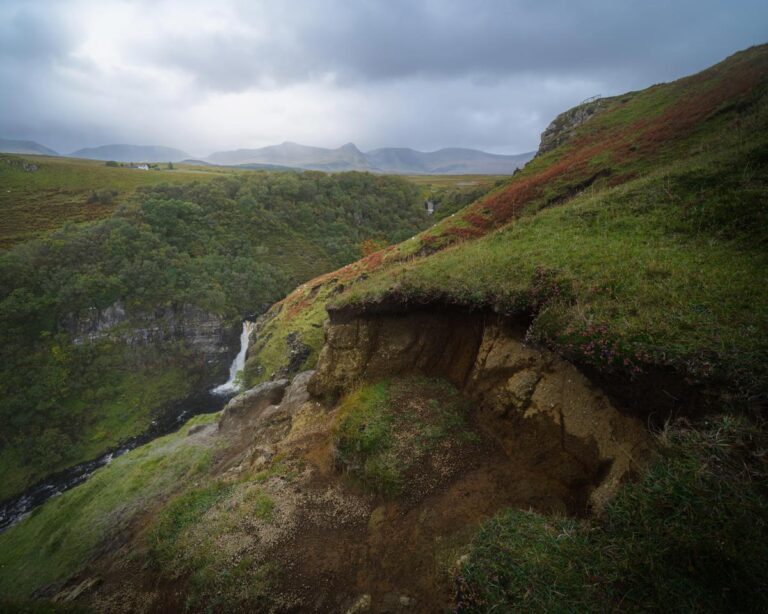Prettiest places to go camping in the UK this summer

Anyone who knows me knows just how outdoorsy I truly am—some would say I’m obsessed. It’s safe to say there are a few fellow fresh air seekers out there too, right? I’m going to give you all the benefit of the doubt, because the summer of 2021 is all about getting to know the country we already live in. There’s a positive! To send you on your way with some stellar advice, here are some of the prettiest camping spots in the UK. You’re welcome.
Canal Camping, Norfolk
If you’re a Londoner, you’ll be well acquainted with the canals, but there is so much more to them. England is riddled with small rivers, and the North Walsham and Dilham Canal is not to be missed. Nestled among the birds, water and reeds, you’ll find the Canal Camping site. It’s relatively easy to get to, there are real toilets and showers as well as braziers for your cooking.
If you happen to have a canoe bobbing about your home, bring it—you’re allowed to take it swimming. If you don’t, fear not, you can hire one too. Once you’re done Bear Grylls-ing in the deepest wilderness, there are pubs within walking distance too. I know, I know, it sounds perfect.
Bert’s Kitchen Garden, Wales
This is a special one, for the serious campers that want total immersion into the good stuff—aka: me. Between mountains and sea on the lesser-visited Llyn Peninsula lies Bert’s Kitchen Garden. There’s a woodland, and a bushy track down to its own little beach. The campsite motto is ‘Sleep, Eat, Escape’—it tells us that “It all begins with an idea to create a space where nature is left to breathe, where people can come together. A place to escape, recharge or celebrate. That place is here, sheltered between the epic Welsh mountains and the sea.” It’s not entirely reclusive, you can do yoga and chat to fellow campers around the communal kitchen if there are any. And to top it all off, all toiletries are provided through their eco friendly policy.
Ten Acres, Devon
I know there’s a few boozy breezers out there, again I probably fit the bill, and this campsite fits it too. Ten Acres is next to a vineyard in Devon, so it’s only fair to organise a wine tasting then amble on back to your tent with nothing but the fresh English air to sober your thoughts. Make a long weekend out of it and stroll through the woodlands nearby, lounge in the hammocks, read a book or something. It’s easy to get to from London too. I’m thinking this could be a perfect date getaway—in fact, I know it would be. Any takers?
Cilrath Wood Camping, Pembrokeshire
This one is for the ‘I like camping but I don’t really like camping’ type. The brand new and beautiful Cilrath Wood Camping in Wales has everything you could possibly want or need—you will by no means be fending for yourself. It positions you in the ideal situation for exploring too, hello history nerds, it’s right on the ancient Landsker border which is marked by frontier castles! Plus, if you want to mingle with the locals, the nearby Welsh market town Narbeth is only a few minutes drive or a short cycle away.
Syke Farm Camping Site, Lake District
What is a ‘camping in the UK’ article without featuring the Lake District? It just doesn’t exist. This part of the world has some of the best places to pitch your tents, you’ll be surrounded by mountains and tranquil lakes, peaceful valleys and fells. Bring your comfiest walking shoes, there is something you’ll want to look at around every corner. The Sky Farm Camping Site is a good place to start, although the area has many others, this one will suit all needs. With all its amenities, you’ll be able to feel as clean as you do at home—the car park is separate from the campsite too so you can feel far away from the bustling world. If you’re a bit of glamper, they have furnished yurts and bell tents as an option to stay in too.
Bach Wen Farm, Snowdonia
Beach bums, this is the place for you. In the foothills of Snowdonia National Park, where the land meets the sea, this is one of the most wonderful places to pitch your moving home. Bach Wen Farm has both self catering, stove burning, mini fridging ‘pods’ to stay in, but of course there’s the raw camping opportunity too, you’ll be cooking over a fire with breathtaking views—can’t complain with that. Hikers will, undoubtedly, head straight for the hills, but the coastline provides ambling walks galore. The campsite itself will show you a remarkable sunset over the sea, a difficult one to forget, really.
Loch Lomond and Trossachs National Park, Scotland
Now, we are talking—I’ve saved the best to last. Generally, wild camping without the landowner’s permission is illegal in England, Wales and Northern Ireland. But wild camping in Scotland isn’t entirely prohibited, so that means you can technically pitch up wherever you like, including in the country’s magnificent National Parks. You’ll have to bring all you need, and leave the site exactly as you found it. If you don’t, I will personally hunt you down. Also, you can only spend two to three nights where you choose, but over the course of those special hours, you will experience unspoilt scenery like not many other places in the world. If you time your trip to the weather right, the stars will cast shadows. Go.




